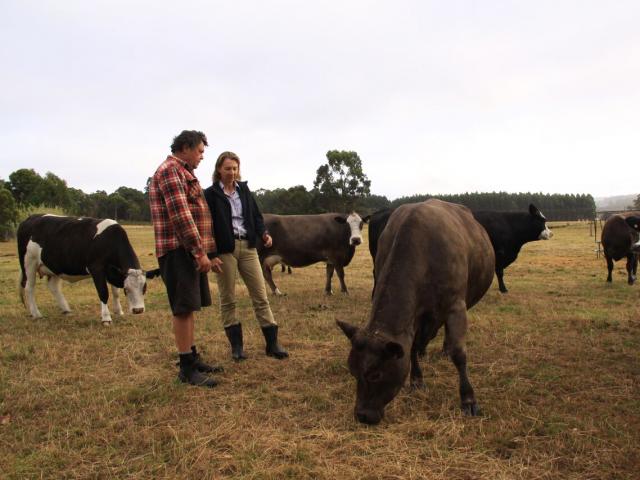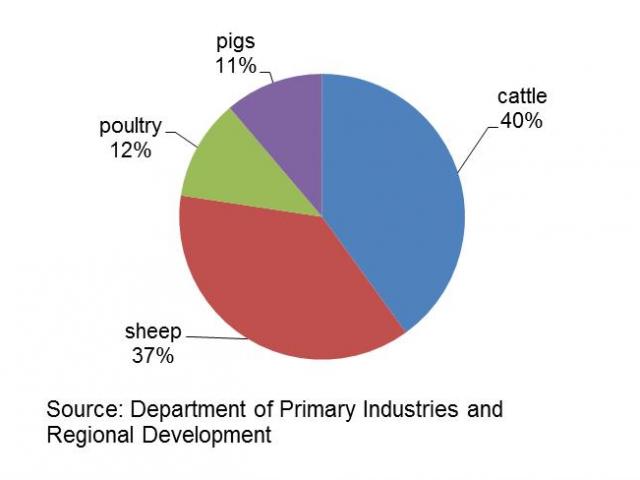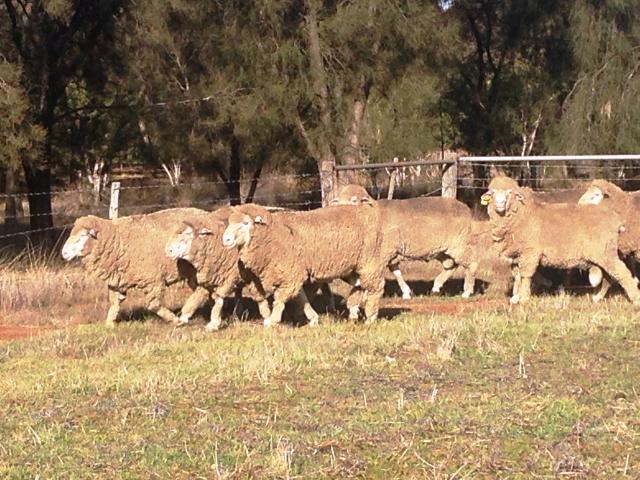Don't panic, it's only grass
The impressive performance of panic grass on sandy soils in the Northern Agricultural Region (NAR) and on the south coast has highlighted that it should be trialed by livestock producers interested in increasing the availability of out of season feed to reduce their reliance on supplementary feed and increasing stocking rates.
Characteristics and growing conditions
Panic grass is a highly palatable, leafy, sub-tropical bunch grass that is drought tolerant and responds rapidly to rain following a dry spell.
It has demonstrated very good persistence and biomass production on sandy soils, including deep pale sands but does not tolerate waterlogging or flooding.
It is readily eaten by cattle and sheep and often preferentially grazed.
Panic has been widely sown in the NAR with more than 50 000ha sown, while on the south coast there are relatively few commercial paddocks, but the potential area is more than 500 000ha.
Panic grass responds rapidly to out-of-season rainfall including light showers of rain.
When the prevailing weather conditions in early winter are mild it can provide modest growth however panic becomes dormant once conditions become cold.
It is one of the first sub-tropical grasses to start growing in spring when the temperatures increase and will continue to grow until soil moisture is depleted.
It is suited to regions that receive more than 425mm of annual rainfall and soils that are well drained.
It typically has a dry matter digestibility of 65%, but can go as high as 72%.
Crude protein varies but on average is 11%.
As a consequence it will maintain stock or provide modest weight gains.
All sub-tropical grasses, including panic grass, are established in spring, while it is getting too late to sow in the NAR this year the sowing window for the south coast is 7 September to 15 October and soils currently have sufficient moisture to ensure success (refer to the Seasonal climate information page on the department’s website).
When planning to establish a sub-tropical grass do not forget the following rules:
- plan ahead
- species selection
- seed quality
- pre-sowing weed control
- sowing time
- machinery setup
- sowing rate and depth
- sowing speed
- post-seeding checks
- grazing management.
These are expanded on in a sub-tropical grass establishment article on the department’s website.
Panic grass has a much smaller seed than kikuyu and as a result needs to be sown at a depth of 5-10mm.
Check seed quality as it can have post-harvest seed dormancy – ask for a Seed Certificate – ‘fresh seed’ = dormant seed.
Commercial varieties
There are three main commercial varieties of panic grass available, including two recently released varieties especially developed for southern Australia, Megamax™059 and Megamax™049.
Megamax™059 is a new variety of panic grass which was selected for superior growth characteristics including increased production, high persistence and cool season tolerance in comparison to other commercial sub-tropical grass cultivars.
It is a medium to large panic grass, medium-leafed with a similar tiller density to Gatton panic.
In Western Australia Megamax™059 has demonstrated very good persistence and biomass production. Limited seed is available in 2017.
Megamax™049 is a new variety of panic grass selected for superior growth characteristics including increased production, high persistence and cool season tolerance in comparison to other commercial sub-tropical grass cultivars.
It is a short to medium panic, the foliage is soft and fine-leafed with excellent leafiness and a medium to high tiller density.
It is early flowering with fine stems. In WA Megamax™049 has demonstrated excellent persistence and very good biomass production. No seed is available in 2017.
Gatton panic is a robust, tufted grass that is agronomically similar to green panic, slightly less drought-tolerant and more sensitive to frosts, but superior on low fertility soils.
Gatton panic has longer and broader leaves than green panic, greener foliage and often contains anthocyanins (purple pigmentation) near the base of the stems.
Companion legumes for panic grass, depending on soil type, include French and yellow serradella on sands and sub clover on the better soils.
If you run livestock on the south coast and have sandy soils, maybe give panic grass a go this spring. For producers in the NAR it’s time to start planning for next year.
For more information contact Paul Sanford, Senior Research Officer, Albany, on +61 (0) 8 9892 8475.
Acknowledgements
The development of the new Megamax panic grasses was co-funded by the department, the Future Farm Industries Cooperative Research Centre, Meat and Livestock Australia and NSW Department of Primary Industries with commercialisation through Heritage Seeds. Agronomic research on panic grass was funded by the department and MLA.
Operation Waybill to target NLIS compliance

National Livestock Identification System (NLIS) compliance will be the focus of a statewide Department of Primary Industries and Regional Development campaign next month.
Operation Waybill will see department inspectors collaborate with WA Police to ensure livestock producers and transporters are complying with cattle, sheep and goat identification and traceability requirements.
Inspectors will visit saleyards, abattoirs and other locations across the state during September to check if stock have been correctly identified and that movement documentation has been completed appropriately.
All paperwork that must accompany the stock in transit will be scrutinised by the inspectors to ensure producers are providing the necessary information.
Department staff will also be conducting electronic audits to ensure livestock sold are transferred on the NLIS database correctly and on time.
The NLIS database records the movement of cattle, sheep and goats across Australia, to assist a rapid response to livestock biosecurity threats.
Producers and industry stakeholders, such as agents, abattoir operators and saleyard managers, are required to ensure livestock movements are recorded on the electronic database in accordance with the state’s biosecurity legislation.
All sheep and goats must have the correct NLIS identification linking them to a property, such as an approved NLIS eartag with the current owner’s brand.
Cattle require an NLIS electronic device in their right ear recorded against the owner’s property identification code (PIC).
A National Vendor Declaration (NVD) waybill needs to be completed to record the movement of livestock between properties with different PICs.
The purpose of Operation Waybill was to increase understanding and awareness of the NLIS.
To maintain and protect our market access, everyone who trades livestock must ensure their animals are identified correctly and can be traced via the NLIS.
The ability to trace livestock is essential should there be an emergency animal disease outbreak or food safety incident.
The information livestock owners record on their NVD is vital to ensure that in the event of a disease outbreak animals can be traced back to their origin and measures implemented to potentially control further spread.
More information about the NLIS and compliance requirements is available on the department’s website by searching for ‘nlis’.
For more information contact Mike Donaghy, Senior Compliance Officer, Bunbury on +61 (0)8 9780 6220.
Partnership protects WA’s livestock markets
Western Australia’s livestock industry and the Department of Primary Industries and Regional Development working in partnership have again provided scientific evidence of WA’s high animal health status, which in turn supports WA’s ability to sell our livestock within Australia and overseas.
In 2016/17, WA producers made more than 1000 calls to a vet to investigate and submit laboratory samples when animals showed signs of illness.
Laboratory testing of these samples was used to support Australia’s proof of freedom from serious diseases that could affect human health, livestock production or trade.
The producers who called the vet also benefited directly from a diagnosis of the cause of disease, allowing them to adjust their management so that they can prevent the disease in future.
In 2016/17, the department’s veterinary pathologists carried out more than 1000 investigations into animal health, with more than 900 of these on the main commercial livestock species – cattle, sheep, pigs and poultry.
The investigations occurred across the state, demonstrating that WA’s surveillance systems are widespread across livestock production areas and that we are likely to recognise any serious diseases that may occur at an early stage.
As WA exports about 80% of our livestock and livestock products every year, valued at about $2 billion annually, it is vital that everyone involved in the industry continues to report unusual signs to their private vet, a department vet or the Emergency Animal Disease hotline on 1800 675 888. This includes producers, vets, stock agents, transporters and processors.
The most common health issues investigated during 2016/17 included sudden death, weakness and lameness, neurological disease signs and abortion and infertility.
It is vital to investigate disease signs like these because while they are most likely due to an endemic disease or management issue, there is a chance that they could be an exotic disease.
The signs of some reportable and exotic diseases can look similar to common diseases. For example, sudden death could be due to anthrax, while lameness occurs in foot-and-mouth disease and mad cow disease would present with neurological signs.
In 2016/17, more than 400 of the sheep and cattle cases submitted for laboratory investigation were also tested for reportable and exotic diseases, providing evidence to our domestic and international markets that we were free of these reportable diseases.
For information about the disease investigation subsidies available to support WA producers’ ongoing access to premium markets for livestock, contact your private vet or local department vet.
Producers and vets can stay up-to-date with the latest information and disease trends by subscribing to the WA animal health surveillance e-newsletter, the WA livestock disease outlook – visit the department website and search ‘waldo’.
For more information about animal health surveillance in WA, visit the department website and search ‘animal health surveillance’.
For more information contact Marion Seymour, Veterinary Officer, Moora on +61 (0)8 9651 0534.
Sterile leucaena program commences in WA
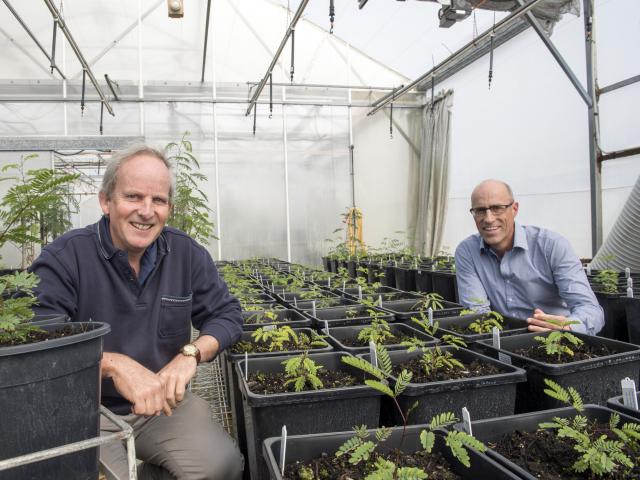
The Western Australian Government has supported an innovative national research project to evaluate the potential for sterile leucaena in the Pilbara and Kimberley.
The project will be delivered in WA by the Department of Primary Industries and Regional Development’s Northern Beef Futures (NBF) project.
The $2.3 million project has been jointly funded over 3.5 years by the WA Government, MLA Donor Company and the University of Queensland.
Leucaena is a fast growing, highly palatable legume forage shrub with high feed value that is often planted in hedgerows, with perennial grass in between, and grazed directly by beef cattle.
It is one of the most financially attractive options for improving the profitability of beef production in the 600-800mm rainfall zone in Central Queensland and could have significant potential for enhancing production in WA’s northern beef industry.
Many pastoralists in WA are keen to use leucaena after seeing its potential in Queensland but it is generally not allowed to be cultivated on pastoral leasehold, due to its high risk of becoming an environmental weed in northern WA.
In this project, NBF researchers will select the best methodology for the breeding program and create the first generation of material.
Controlled field sites will be established in the Kimberley and Pilbara, and potentially the Murchison and Gascoyne, targeting both irrigated and dryland production, to assess a range of leucaena germplasm for possible inclusion in the breeding program.
Further funding will be required to develop and test the product in readiness for commercialisation.
A sterile leucaena outcome could have application far beyond Western Australia - both nationally and internationally.
For more information contact Senior Research Officer, Clinton Revell, South Perth on +61 (0)8 9368 3596.
Don’t bring ovine brucellosis home with new rams
Sheep producers are advised to check for the reproductive disease ovine brucellosis before buying rams this season.
Ovine brucellosis is a bacterial disease of rams which results in poor ram fertility – reducing productivity and profitability.
The disease is spread between rams through sexual activity and can affect any breed of ram.
Using rams with the disease leads to poor lambing percentages and the disease is expensive to eradicate once established.
There is no vaccine for the disease and affected animals should be culled.
To reduce the risk of buying rams with ovine brucellosis, take the following steps:
- Don’t rely on visual and physical checks of ram testes alone - checking for odd swellings is important, but not enough as rams with ovine brucellosis often have normal looking testes and do not appear sick.
- Ram buyers are encouraged to request negative blood test results for ovine brucellosis before buying, or to consider buying rams from flocks accredited under the WA Ovine Brucellosis Accreditation Scheme (OBAS).
Producers in the accreditation scheme are able to provide a high level of assurance of freedom from ovine brucellosis for their flock.
Accredited producers must have regular negative test results and demonstrate good biosecurity practices to be accredited.
Buyers should also ask for a National Sheep Health Declaration, so that they can make informed decisions based on the management and disease history of the animal or flock.
The best time to check rams for ovine brucellosis is before they arrive on the farm.
If testing is not done before the rams arrive, they should be isolated and have two blood tests 60 days apart with negative results before mixing with other stock.
It should also be noted that ewes are a potential source of infection.
Ewes that have recently mated with infected rams also risk infecting clean rams if they are exposed in the same oestrus cycle.
Ewes introduced onto a farm should not be joined for a minimum of four months to ensure they clear any potential infection with ovine brucellosis.
For more information, see the department website and search ‘ovine brucellosis’ or contact Kristine Rayner, Veterinary Officer, Bunbury on +61 (0)8 9780 6235.
Flystrike app in focus at sheep forum

Improving farm business and ensuring producers can make the most from their ewes was a key focus at recently held ‘It’s Ewe Time’ events in Esperance and Northam on 22 and 24 August.
The Department of Primary Industries and Regional Development’s Flystrike Assist app was relaunched at the events, giving sheep producers a technology powered guide to decision-making about the appropriate chemical for flystrike prevention.
Originally released in 2012, the updated app now includes all commercially available flystrike preventative chemicals presented within a user friendly design.
The app allows users to choose a preferred chemical and view the withholding and protection periods, set an application date and prepare a timeline for the selected application.
The free app is now available for download on Android and iOS devices.
Expert speakers at the event included the department’s Senior Economist Tamara Alexander whose presentation was focused on alternative pathways to enterprise expansion.
Brown Besier of Besier Parasitology presented on sheep health management, concluding with Development Officer John Paul Collins’ talk on new on-farm technology.
Sheep Industry Director Bruce Mullan valued the opportunity to connect with the regions.
Events like It’s Ewe Time give the department a chance to continue building strong relationships and sharing knowledge with producers.
The forums were hosted by the department in partnership with industry bodies Meat and Livestock Australia (MLA) and Australian Wool Innovation (AWI), and were designed to increase producer awareness of the tools, techniques and technologies to help build a profitable and productive sheep enterprise.
Visit Flystrike Management Tools for more information on the Flystrike app and other available tools.
For more information contact Julia Smith, Development Officer, Albany on +61 (0)8 9892 8450.
High scour worm burdens reported this spring
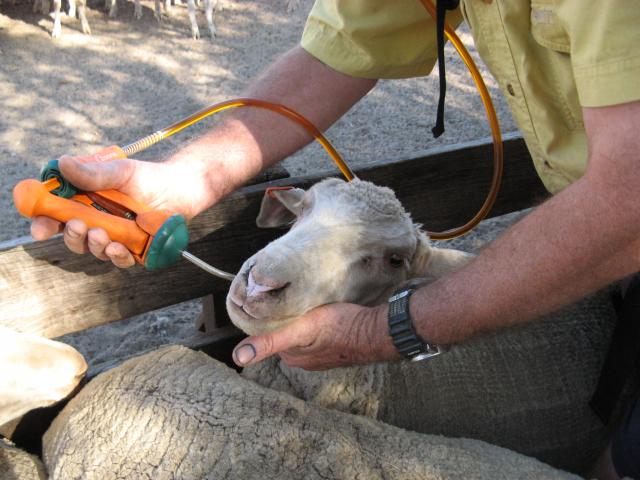
Investigations into deaths, illthrift and scouring in ewes and lambs this spring have shown some have very high scour worm burdens.
Recent worm egg counts from ewes and lambs also identified some mobs with unexpectedly high levels of scour worms – this includes black scour worm, brown stomach worm and, to a lesser extent, the thin-necked intestinal worm and large mouthed bowel worm.
Affected flocks were located throughout the medium and high rainfall agricultural zones.
This worm alert is important as there is usually no need to drench ewes when lambs are weaned.
However, the long period of low Feed-On-Offer (FOO) availability over winter has not only led to heavily worm contaminated pastures but has also delayed the improvement in condition of ewes and the accompanying increase in their immunity to worms.
With the expectation of adequate spring nutrition worm immunity in sheep should return, however some mobs of ewes in poorer condition than normal may require an effective drench at weaning to help them through.
Treat your lambs
Given the seasonal conditions it is now imperative that lambs are weaned by 14 weeks after the start of lambing to reduce deaths and illthrift this spring.
Lambs need an effective treatment at weaning and then go onto a lower worm burden paddock.
Lambs have no immunity to worms and a worm egg count four weeks after weaning is essential to detect if scour worms will reduce their growth rates over spring.
Check effectiveness of drenches
To check if a drench is effective collect 20 dung samples when the mob is drenched for faecal worm egg counts, then again 14 days later from the paddock.
There is no need to yard the weaned lambs for the second sampling for this drench-check, however, a full drench resistance test on lambs kept back at weaning is the best way to test how effective several drench types are against the brown stomach worm at the same time.
This drench resistance testing will require advice from a worm egg count provider.
Protect against flystrike
As the weather warms up, regular monitoring of flocks is required as sheep with diarrhoea are at risk of fly strike.
Producers could consider crutching and/or using a long acting preventative fly treatment, which can offer between three and five months of protection.
Producers are reminded to be aware of chemical with-holding periods when attending to fly strike and to use the department’s revamped free Flystrike Assist app to manage and record treatment applications.
For more information go to “Sheep worms - testing for drench resistance and effectiveness” or “Sheep worm control in Western Australia” or Worm Boss.
Producers urged to beware of lead poisoning risks
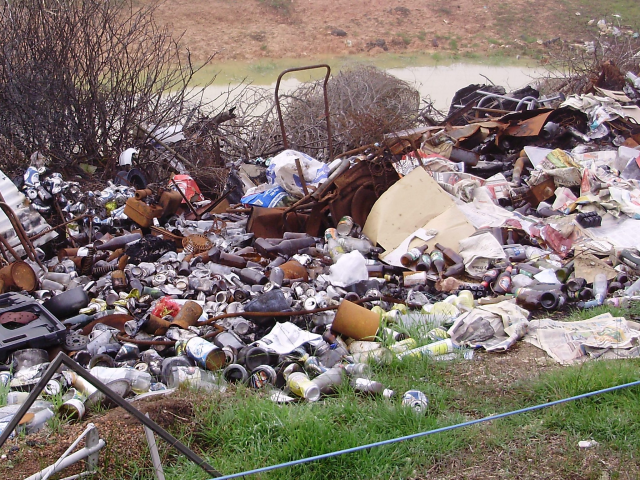
Western Australian producers are being urged to take steps to protect their livestock from possible lead poisoning after six cattle died on a Wheatbelt property from exposure to lead batteries.
The cattle had access to an unfenced burnt stockpile of old batteries on the property.
A further 12 cattle were diagnosed with lead toxicoses.
A residue quarantine notice has been issued for the property and remaining animals cannot be moved until laboratory testing has confirmed they are free of lead residues.
Unfortunately, the first sign of lead poisoning can often be finding dead stock.
Cattle have a higher risk of lead poisoning because of their inquisitive nature.
They have a tendency to ‘taste test’ items such as old batteries, sump oil, flaking paint, ashes, diesel and many other common objects which could contain lead.
Affected animals may become blind, unresponsive to their surroundings or may stumble into fences or other obstacles.
Some animals could become comatose and die.
While some livestock that ingest lead may be poisoned, others may show no signs of ill health.
Any animal exposed to lead, however, must not be sold because of the risk of lead residues in the body.
Lead poisoning or the risk of residues could be prevented by carrying out a property risk assessment as part of developing an on-farm biosecurity plan.
Livestock Production Assurance (LPA) had recently announced that all accredited members would be required to have a farm biosecurity plan and implement effective biosecurity practices in their on-farm management.
The best course of action is to identify possible sources of lead, then manage these areas by permanently fencing to prevent livestock from having access or removing the source of contamination.
Using livestock to control weeds around parked machinery or open sheds also poses a hazard and should be avoided.
Cattle and sheep grazing close to machinery and sheds have a risk of ingesting lead contained in the paint, in leaked oil from machines or in stored or discarded oil and batteries.
Animals typically develop a taste for lead and keep returning, eventually consuming a toxic dose.
It is illegal to sell animals suspected of ingesting lead for slaughter or for milk production for a set time period to ensure there was no residue risk.
This is good reminder for producers to consider their biosecurity practices and strengthen measures to not only protect their livestock, but also the reputation of the WA livestock industry and access to valuable markets.
For more details see Prevent lead poisoning and residues in livestock or contact your local department veterinary officer or private veterinarian.
For more information contact Kevin Hepworth, Veterinary Officer, Bunbury on +61 (0)8 9780 6282.
Rangelands irrigated fodder research displayed
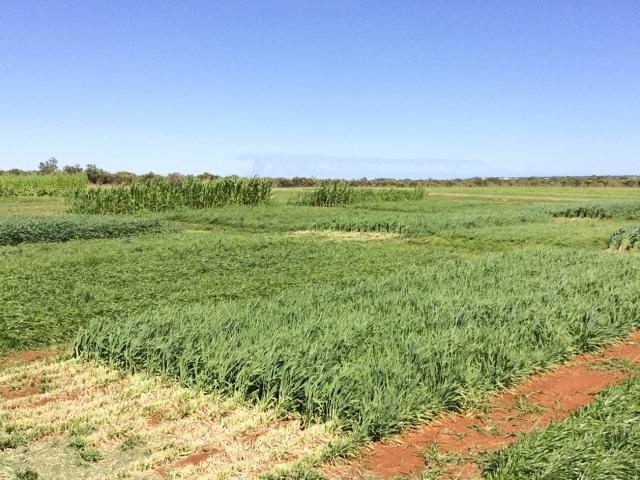
Pastoralists, agribusiness and Water Corporation representatives joined Northern Beef Futures project staff in Broome at a field walk of ongoing fodder production research based on centre pivot irrigation systems.
The Department of Primary Industries and Regional Development’s research into irrigated fodder production in the Kimberley and Pilbara aims to improve supply chain value and meet market specification to support the competitiveness of the northern beef industry.
The mosaic agriculture research, located just north of Broome, is focused on species for hay production and direct grazing, and includes a range of annual and perennial tropical grasses, temperate annual grasses and legumes.
The trials are sampled at different cutting times over the wet and dry seasons to measure regrowth and feed quality. The first measurements, taken recently, showed all varieties had established well and revealed good growth and feed quality.
The field walk provided an opportunity for participants to see the performance of different varieties in the field, at different stages of growth, and hear about their feed quality.
The trials, located at the Water Corporation’s Broome North Wastewater Treatment Plant, enable intensive measurement of plant growth and feed quality and provide a range of benchmarking data.
This collaborative arrangement provides the department with a site close to the Broome office and the Water Corporation receives specialised advice on its irrigation management decisions.
This type of cross-department collaboration is a good example of the efficient use of public resources for industry and community benefit.
Water Corporation Regional Manager North West Rino Trolio said Broome North was the only site in Australia where recycled water was used to grow Rhodes grass for the cattle industry.
Proceeds raised by the sale of Rhode grass funded community projects through the Water Corporation’s West Kimberley Community Grants Scheme.
The northern beef industry is a vital contributor to the economic development of the state.
The Northern Beef Futures project is supported by Royalties for Regions and the project’s mosaic agriculture research is co-funded by the MLA Donor Company.
For more information contact Clinton Revell, Senior Research Officer, South Perth on +61 (0)8 9368 3596.
New coordinator keen to boost lambing rates for WA producers
Albany local Brydie Creagh has been appointed as Lifetime Ewe Management (LTEM) Coordinator, a position jointly supported by the Department of Primary Industries and Regional Development and the Rural Industries Skill Training Centre (RIST).
Lifetime Ewe Management (LTEM) is a best practice ewe management program aimed at increasing on-farm productivity and profitability by focusing on condition scoring ewes, assessing pasture and feed budgeting.
It is a nationally accredited course involving groups of up to six producers and six 'hands-on' sessions over a period of 12-18 months.
Benefits from participating in LTEM come via two avenues:
- increased efficiency due to improved understanding of the pasture-animal system
- meeting targets for the condition score profile of the ewe flock.
Ms Creagh brings a wealth of local knowledge to the role, growing up in regional Western Australia on farms and in farming communities.
She is a former ambassador for the Primary Industry Centre for Science Education, a national organisation which collaborates with universities and high schools focused on educating students and teachers about the opportunities in the agricultural industry.
After graduating from the University of Western Australia with a degree in Agricultural Science last year, Ms Creagh is looking forward to helping producers increase production by implementing the LTEM principles.
Ms Creagh is passionate about improving outcomes for sheep farmers, particularly by boosting lambing rates, which is one of the key aspects of Lifetime Ewe Management.
For more information on LTEM or to find a group near you contact Brydie Creagh, LTEM Coordinator, Albany on +61 (0)8 9892 8470 or +61 (0)400 814 306.
Spring into September with SIBI events

The Sheep Industry Business Innovation (SIBI) project is hosting two events this September – the Sheep Technology Field Day and a sheep feedlotting workshop
The Sheep Technology Field Day will be held on 19 September in Northampton, in conjunction with the Northern Agri Group (NAG) and Mulga Springs Poll Merino Stud in mid-September.
Speakers from the department will cover topics including sheep genetics, electronic identification (EiD), feeding sheep over summer, Lifetime Ewe Management groups.
Equipment including sheep handlers and EID will also be on display.
See Sheep Technology Field Day for more details, including the program.
This event is free to attend so RSVPs are essential.
Please confirm your spot with host Jessica Horstman on +61(0) 428 953 912.
The sheep feedlotting workshop focuses on a SIBI-commissioned report by Geoff Duddy from Sheep Solutions, which analyses the prices, patterns and profitability of feedlots.
The workshop will take place on Wednesday 20 September at the departments head office in South Perth (details on the department's website).
The Perth seminar is available via video conference to the department’s regional offices in Albany,
Bunbury, Esperance, Katanning, Merredin, Moora, Narrogin and Northam. View office addresses on the department’s website.
This event is free to attend so RSVPs are essential. Please confirm your spot with Albany Development Officer Julia Smith on +61 (0)8 9892 8450.

